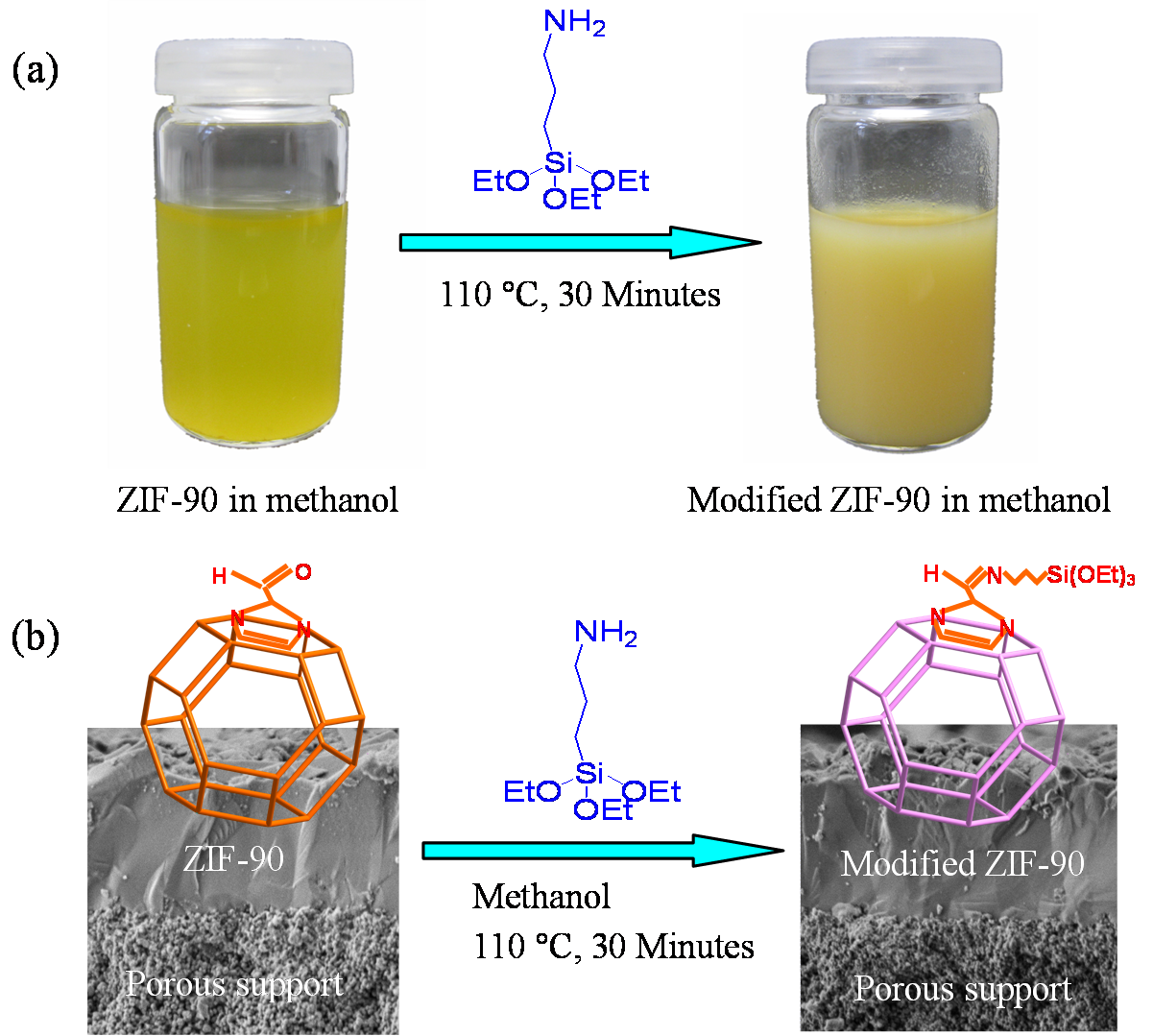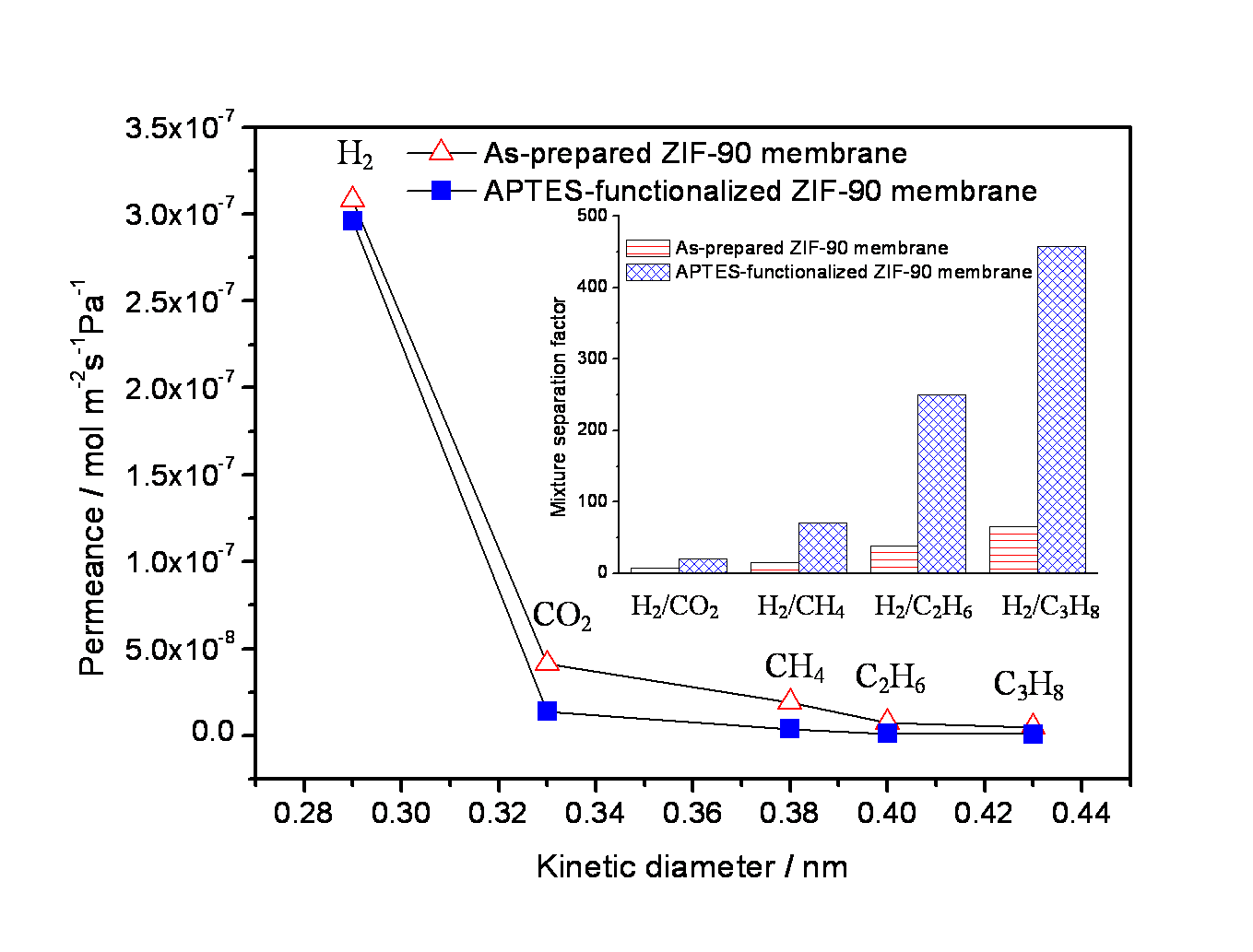The recently developed metal-organic frameworks (MOFs) are emerged as a new kind of porous crystalline materials with uniform pore structure. This fascinating class of hybrid materials, which are formed by association of organic metal centers and organic linker(s) by covalent bonds or ionic bonds, offer wide applications in gas adsorption and storage, molecular separation, catalysis, photoelectricity and sensor. Due to their good adsorption affinities, high specific surface area, exceptional thermal and chemical stability, the synthesis and application of MOF membranes have been attracted intense interest, and recently become the hot topic in gas-separation membrane. However, since the heterogeneous nucleation and growth of MOF crystals on porous supports surface is very poor, it is still rather challenged to develop MOF membranes with high gas separation performance.
Recently, cooperating with Prof. Caro from Leibniz University Hannover, the group led by Dr. Aisheng Huang from the Ningbo Institute of Materials Technology & Engineering, the Chinese Academy of Sciences, has developed an amazing hydrogen-selective ZIF-90 membrane with high gas separation performance. Through imine condensation reaction between the free aldehyde of ZIF-90 and the amino group of organosilica (Figure 1), both narrowing of pore mouth and sealing of intercrystalline defects of the polycrystalline ZIF-90 layer took place, and thus the gas separation selectivity was enhanced.
 |
|
Figure 1. Scheme of covalent post-functionalization of suspended ZIF-90 crystals in methanol (a), and molecular sieve membrane (b) via amine condensation by using organosilica APTES. (Image by NIMTE) |
For binary mixtures at 225 ºC and 1 bar, the mixture separation factors of H2/CO2, H2/CH4, H2/C2H6 and H2/C3H8, were found to be 20.1, 70.5, 250 and 458, and a relatively high H2 permeance of about 2.85 x 10-7 mol·m-2·s-1·Pa-1 could be obtained due to the avoidance of pore blocking (Figure 2). The highly permselective and hydrothermally stable ZIF-90 is of promising for hydrogen purification and separation.
 |
|
Figure 2. Single gas permeance on the as-prepared and APTES-functionalized ZIF-90 membranes at 225 ºC and 1 bar as a function of the kinetic diameter. The inset shows the mixture separation factors for H2 over other gases from equimolar mixtures. (Image by NIMTE) |
This work was recently published as communication on Angewandte Chemie (Angew. Chem. Int. Ed., 51 (2012) 10551–10555)
Professor Aisheng Huang: huangaisheng@nimte.ac.cn
.

